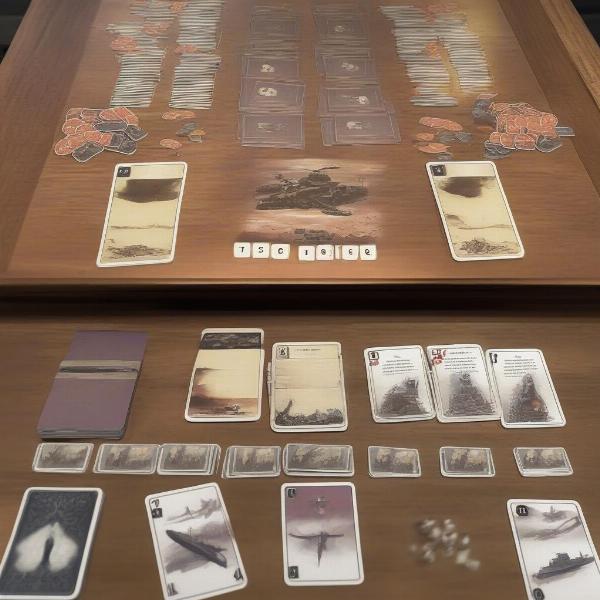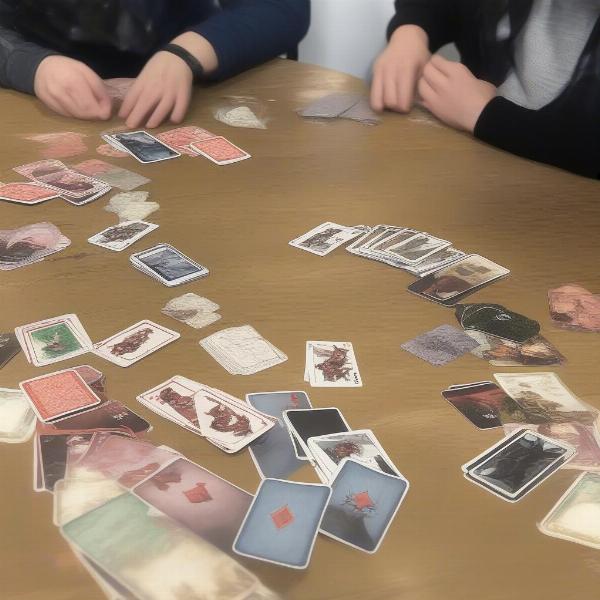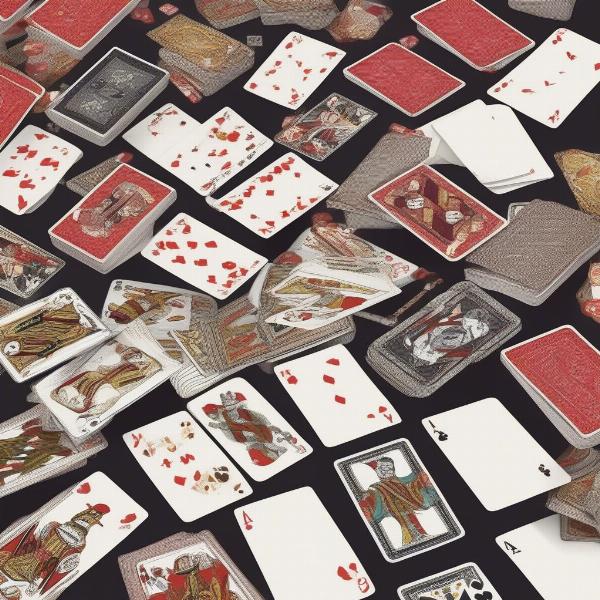The classic card game, “I Declare War,” is a staple in many households, offering simple yet engaging gameplay. At supremeduelist.blog, we delve into the mechanics and strategies behind this timeless game. This article aims to provide a comprehensive understanding of the rules, offer strategic insights, and explore variations, ensuring a richer experience for all players, from novices to seasoned card game enthusiasts.
This popular game, often referred to simply as “War,” is a fast-paced and luck-based card game that requires minimal strategy, making it ideal for players of all ages. We’ll cover the standard rules, explore effective gameplay approaches, and highlight a few creative twists to spice up your next game night.
Understanding the Core Rules of I Declare War
The basic premise of “I Declare War” is incredibly simple. The standard game uses a standard deck of 52 cards, divided equally among two players. Each player keeps their cards face down in a pile. At the beginning of each round, both players simultaneously flip the top card of their pile. The player with the higher-ranked card wins the round, collecting both cards and adding them to the bottom of their pile. This process continues until one player has collected all the cards.
A key element of “I Declare War” occurs when both players reveal cards of the same rank. When a tie occurs, both players declare war! Each player places three additional cards face down, and then reveals a fourth card. The player with the higher fourth card wins the war, claiming all the cards involved in the war, including the initial tied cards and the face-down cards.  war card game setup This simple set of rules makes it easy for anyone to learn and jump right into the action. You can even try out a [i declare war online card game] to practice and have fun.
war card game setup This simple set of rules makes it easy for anyone to learn and jump right into the action. You can even try out a [i declare war online card game] to practice and have fun.
Rank and Suit Significance in “I Declare War”
In “I Declare War,” the suit of a card has absolutely no importance; only the numerical rank matters. The ranks proceed from the lowest to the highest as follows: 2, 3, 4, 5, 6, 7, 8, 9, 10, Jack, Queen, King, Ace. The Ace is always the highest card. This consistent ranking is crucial to understand the gameplay and outcomes. When it comes to understanding card game mechanics, [card games bridge war gin] present a wide spectrum, from strategic depth to straightforward simplicity.
Tiebreakers: The Dynamics of War
As mentioned, tied cards result in a “war.” This mechanic adds an element of drama and potential card swings. It’s important to note that a “war” is resolved by comparing the revealed fourth cards of each pile. If a tie occurs again during a war, another war ensues until a winner is declared. This can lead to a substantial accumulation of cards for the winning player in a given war. Understanding this “war” mechanic is essential to navigate the game effectively, even though the game is primarily based on luck.
Strategic Insights for “I Declare War”
While “I Declare War” is heavily reliant on luck, some aspects can be managed to slightly improve your chances of winning. One approach is to maintain a steady pace of play, carefully observing your pile and your opponent’s pile. Though you can’t control which cards you draw, keeping track of the approximate number of cards your opponent has could give you a sense of how the game is progressing.
“The beauty of ‘I Declare War’ lies in its simplicity, making it a perfect game for casual play and for introducing card game mechanics to younger players. Its blend of luck and fast gameplay ensures that no two games are exactly alike,” explains Dr. Eleanor Vance, a game theory specialist. It’s important to also have fun and enjoy the unpredictability of the game.
Card Management and Observation
There isn’t necessarily a particular card management strategy that works in “I Declare War” due to the game’s reliance on chance. However, simply being aware of the size of your pile versus your opponent’s can offer a basic understanding of who might have the better position. The key point here is to ensure that you are consistent with the rules.  card game war strategy As you become more experienced, it will become easier to notice these changes in the card distribution, helping you gauge your odds, even in a luck-based game.
card game war strategy As you become more experienced, it will become easier to notice these changes in the card distribution, helping you gauge your odds, even in a luck-based game.
Psychological Aspects
Although there is no strategic depth in terms of the cards you play, psychological play can be present. For example, it may be beneficial to maintain a steady pace, without showing any emotion on your face. Keep in mind that if you seem frustrated, this might motivate your opponent, and vice versa. Playing with a level of composure can help you in any game you play. However, remember that “I Declare War” is a light-hearted game, so don’t overthink this strategy.
Variations on “I Declare War”
While the standard rules are widely played, numerous variations can add a refreshing twist to the gameplay. One popular variation is “Egyptian War,” which introduces the concept of slapping the pile under certain conditions, adding a reaction-based dynamic to the game. [egyptian war card game rules] provides a detailed explanation of this variation.
Another popular twist involves adding special cards to the game that alter the rules of play. For example, including Jokers can either be wild cards or provide specific action. You can also implement new rules related to the way wars are played. Players often use their own house rules to enhance the game.
Introducing Special Cards
Adding special cards, such as Jokers, can greatly change the dynamics of “I Declare War.” One can include them into the pile, deciding that the Joker is worth the rank of Ace, or any other assigned rank. You can also assign Jokers to represent a “skip turn” card, or any other gameplay mechanic that adds novelty.
Changing the Number of Face-Down Cards During a War
Altering the number of face-down cards during a war can make the game more volatile and unpredictable. Instead of three face-down cards, you could increase or decrease this number, creating either longer or shorter wars. This adds a layer of customisation to make the game even more enjoyable. “These small variations can make a big difference, turning a familiar game into something new and exciting,” notes Sarah Chen, a renowned card game designer.  card game war variations
card game war variations
Combining “I Declare War” with Other Games
“I Declare War” can be a starting point for other card games and their variations. Consider using a similar ranking system, or the “war” mechanic, to add twists to games with more strategy. The base rules of “I Declare War” are versatile, and can be adapted to create brand new games.
Conclusion: The Enduring Appeal of “I Declare War”
“I Declare War” continues to captivate players because of its simplicity, ease of learning, and fast gameplay. The core mechanics are basic, yet they provide an engaging experience for anyone, regardless of card game experience. While luck primarily determines the outcome, small tweaks and understanding the nuances can enrich the game. The strategies employed in [world war 2 turn based strategy games] are vastly more intricate, but “I Declare War” maintains its charm with its random, exciting gameplay.
Remember, “I Declare War” is primarily about having fun, whether with friends or family. At supremeduelist.blog, we strive to bring you the most engaging and thorough analysis of popular games, and “I Declare War” is a perfect example of a classic game that remains timeless. Whether you’re playing the standard rules or trying out variations, this game promises endless hours of simple entertainment. So, gather your deck and prepare to declare war!
Leave a Reply